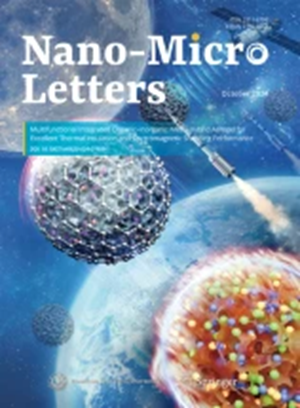Chip-Based High-Dimensional Optical Neural Network
IF 36.3
1区 材料科学
Q1 MATERIALS SCIENCE, MULTIDISCIPLINARY
引用次数: 0
Abstract
Highlights
-
High-dimensional optical neural network is achieved by introducing an on-chip soliton microcomb source and wavelength division multiplexing technique.
-
The programmable electro-optic nonlinear layer and optical meshes promote the implementation of a multi-layer optical neural network.
-
Ultra-low coupling loss is realized between functional chips and fiber array, which is around 1 dB per facet.
基于芯片的高维光神经网络
亮点 通过引入片上孤子微梳源和波分复用技术,实现了高维光神经网络。 可编程电光非线性层和光网格促进了多层光神经网络的实现。 功能芯片与光纤阵列之间实现了超低耦合损耗,每个面的耦合损耗约为 1 dB。
本文章由计算机程序翻译,如有差异,请以英文原文为准。
求助全文
约1分钟内获得全文
求助全文
来源期刊

Nano-Micro Letters
NANOSCIENCE & NANOTECHNOLOGY-MATERIALS SCIENCE, MULTIDISCIPLINARY
CiteScore
42.40
自引率
4.90%
发文量
715
审稿时长
13 weeks
期刊介绍:
Nano-Micro Letters is a peer-reviewed, international, interdisciplinary and open-access journal that focus on science, experiments, engineering, technologies and applications of nano- or microscale structure and system in physics, chemistry, biology, material science, pharmacy and their expanding interfaces with at least one dimension ranging from a few sub-nanometers to a few hundreds of micrometers. Especially, emphasize the bottom-up approach in the length scale from nano to micro since the key for nanotechnology to reach industrial applications is to assemble, to modify, and to control nanostructure in micro scale. The aim is to provide a publishing platform crossing the boundaries, from nano to micro, and from science to technologies.
 求助内容:
求助内容: 应助结果提醒方式:
应助结果提醒方式:


